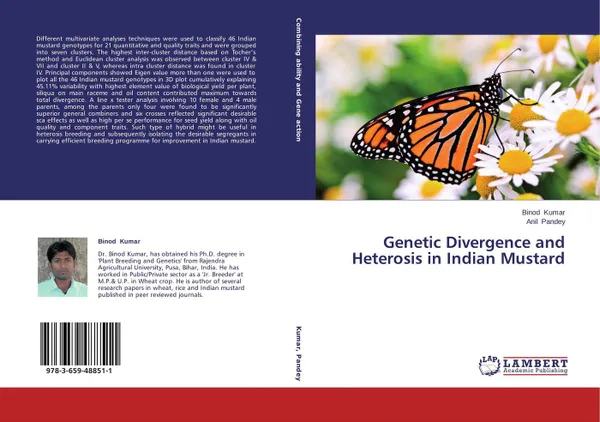Genetic Divergence and Heterosis in Indian Mustard
Автор: Binod Kumar and Anil Pandey
2013
Переплёт: Мягкая обложка, 280 страниц
Категория: Учебная литература
Тираж: 500
📗 Different multivariate analyses techniques were used to classify 46 Indian mustard genotypes for 21 quantitative and quality traits and were grouped into seven clusters. The highest inter-cluster distance based on Tocher’s method and Euclidean cluster analysis was observed between cluster IV & VII and cluster II & V, whereas intra cluster distance was found in cluster IV. Principal components showed Eigen value more than one were used to plot all the 46 Indian mustard genotypes in 3D plot cumulatively explaining 45.11% variability with highest element value of biological yield per plant, siliqua on main raceme and oil content contributed maximum towards total divergence. A line x tester analysis involving 10 female and 4 male parents, among the parents only four were found to be significantly superior general combiners and six crosses reflected significant desirable sca effects as well as high per se performance for seed yield along with oil quality and component traits. Such type of hybrid might be useful in heterosis breeding and subsequently isolating the desirable segregants in carrying efficient breeding programme for improvement in Indian mustard.
Мнения
